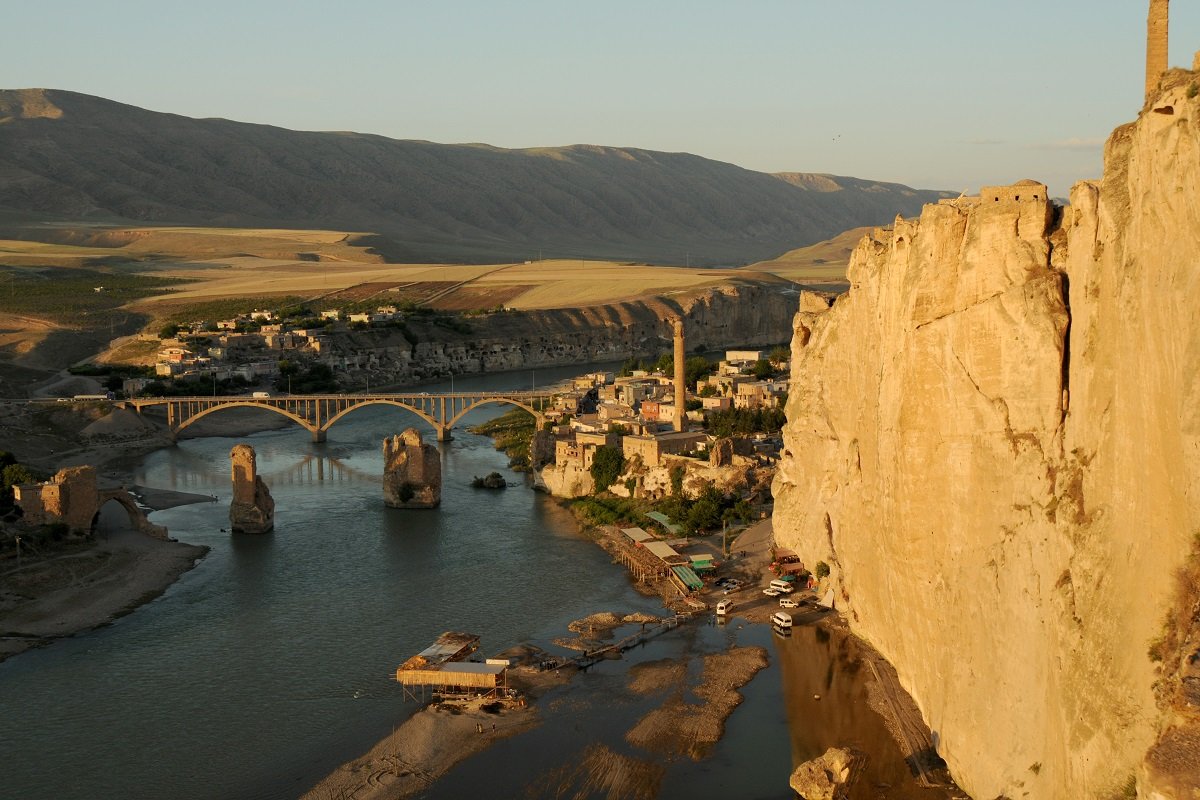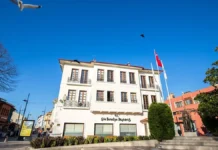
As the Board of Europa Nostra deeply deplores the decision of the Turkish government to build a dam that would lead to flooding of Hasankeyf, Dutch, German, Iraqi, Iranian, British and Turkish civil society organizations oragnized a protest against the Dutch company Bresser, which is relocating the historical monuments in Hasankeyf, in Rotterdam on Wednesday.
Bresser Company, which is specialized in relocation of buildings and monuments, is currently moving historical monuments of the town of Hasankeyf, located in the mainly Kurdish populated Southeast Anatolia. The relocation is part of the highly controversial Ilısu Dam Project and protestors demand from Bresser to end the relocation of the cultural sites.

The protestors criticized the involvement of Bresser in the project, which is in violation of Turkish law and international conventions. Claiming that contract made by Breser for the project is out of public scrutiny, protestors say the company has also violated the Council of Europe Convention on the Preservation of the Architectural Heritage of Europe (CETS 121) and the OECD Guidelines for Multinational Enterprises. Protestors said the relocation of The Zeynel Bey Tomb is an open violation of the CETS 121 which both Turkey and the Netherlands have signed, and also an infringement of the Human Right to Cultural Heritage.
It was reported that a number of civil society organizations are planning to lodge a complaint against Bresser for violation of the OECD Guidelines for multinational enterprises du to the company’s failure to conduct due diligence on human rights impacts, and its lack of respect for human rights to culture.
The protest were participated by DEM-NED (Council of Communities from Kurdistan in Netherlands), Initiative to Keep Hasankeyf Alive (Turkey), Hasankeyf Matters (Turkey), Mesopotamian Ecology Movement (Turkey), Save the Tigris and Iraqi Marshes Campaign (Iraq), Humat Dijla (Iraq), Mountain Watch (Iran), BankTrack (the Netherlands), CounterCurrent (Germany), The Corner House (UK).
Meanwhile, the Board of Europa Nostra, the leading heritage organisation in Europe, made a statement about the Ancient city of Hasankeyf and its surroundings in Turkey, listed among the 7 Most Endangered heritage sites in Europe in 2016; and deeply deplores the decision of the Turkish government to build a dam that would lead to the flooding of a site of world significance.
The Board said they regretted that the removal of the Zeynel Bey Tomb has been carried out with insufficient consultation with the local and scholarly communities and that other Islamic monuments of great significance remain highly endangered. The Board urged the Turkish authorities to adhere to the standards of heritage protection that are included in the European Conventions and to set up a proper consultation process with local communities and civil society organisations concerned in an open and transparent manner.
Regarding the relocation of the Zeynel Bey Tomb, a monument featuring Timurid tradition, in Hasankeyf last month the Board of Europa Nostra said that “It is to be regretted that this removal has been carried out without sufficient documentation having been provided and certainly with insufficient consultation either with the local or with the scholarly community, both of which believe that the value of the site of Hasankeyf is far greater than the benefits to be obtained by its flooding.”
“It is to be even more regretted that other Islamic monuments of great significance including the medieval bridge of the 12th century of the Artukid dynasty, the 15th century mosque complex and tomb of the Ayyubid Sultan Süleyman and the Imam Abdullah Tomb, remain at risk. For all these reasons, Hasankeyf was included on its 2016 List of 7 Most Endangered sites in Europe, as part of the programme run by Europa Nostra in partnership with the EIB Institute and the Council of Europe Development Bank,” said the statement.
The Europa Nostra Board also deplored the fact that the law recently passed by the Turkish Parliament overrules the decision taken by the Turkish courts in 2013 that the relevant Environmental Impact Assessment Report was inadequate.

“Hasankeyf possesses one of the richest treasures of Islamic monuments in any country member of the Council of Europe. Acknowledging and affirming the value of this heritage for Europe’s shared cultural heritage, we deeply deplore the decision of the government of Turkey, a Member State of the Council of Europe, to build a dam which would lead to the flooding of such a site and, as a consequence, to the loss of one of the most valuable witnesses of Islamic heritage in a European country, without proper and transparent justification and without adequate compensation measures.
“We urge the Turkish authorities to adhere to the principles and standards of heritage protection which are included in the European Conventions adopted under the auspices of the Council of Europe and of which Turkey is a signatory (namely the Granada Convention and the Valletta Convention). We also make a strong appeal to the Turkish authorities to set up a proper consultation process with local communities and civil society organizations concerned in an open and transparent manner. It is by now very late but applying best international practice to this case of outstanding but endangered heritage could still be beneficial.”
Europa Nostra is the pan-European federation of heritage NGOs which is also supported by a wide network of public bodies, private companies and individuals. Covering more than 40 countries in Europe, Europa Nostra is the voice of civil society committed to safeguarding and promoting Europe’s cultural and natural heritage. The most representative heritage network in Europe campaigns to save Europe’s endangered monuments, sites and landscapes, in particular through the 7 Most Endangered programme.
Hasankeyf, sitting on the banks of the River Tigris, is one of the most important architectural and archaeological sites in Europe, boasting a rich biodiversity and 12,000 years of human history. Masterpieces of Islamic architecture, dating from the 12th to 15th centuries C.E., make the town one of the best preserved witnesses to Seljuk urban culture, particularly from the Artukid and Ayyubid dynasties.
A small town with a great heritage, Hasankeyf already attracts about 500.000 visitors each year, a number expected to rise. Given its historical, architectural and economic significance for the region, public opinion supports its preservation. The area was declared a First Degree Archaeological Site by Turkey’s Supreme Board of Monuments in 1978 and has been under the protection of the Culture Ministry’s General Directorate of Antiquities and Museums since 1981.
The urgent threat to Hasankeyf is posed by the Ilısu dam hydroelectric power project which, if implemented as planned, would submerge the site under 65 meters of water by 2018. The Government of Turkey has a vision for salvaging selected monuments and developing the site as a prestigious destination. However, Hasankeyf’s preservation in its original location might prove more economically advantageous than the dam, and its cultural significance for Turkey is incomparable.
Ilısu Dam, which is under construction would create, if completed and implemented as planned, a social, cultural and ecological disaster in the region, impacting not only Turkey but the Tigris basin in Iran and Iraq as well. The local population and Turkish as well as international environmental and human rights groups vehemently reject the project, which will lead to serious human rights violations. To make way for the dam, a small number of ancient monuments will be relocated outside the planned dam reservoir close to new settlement called “New-Hasankeyf.”
June 29, 2017














